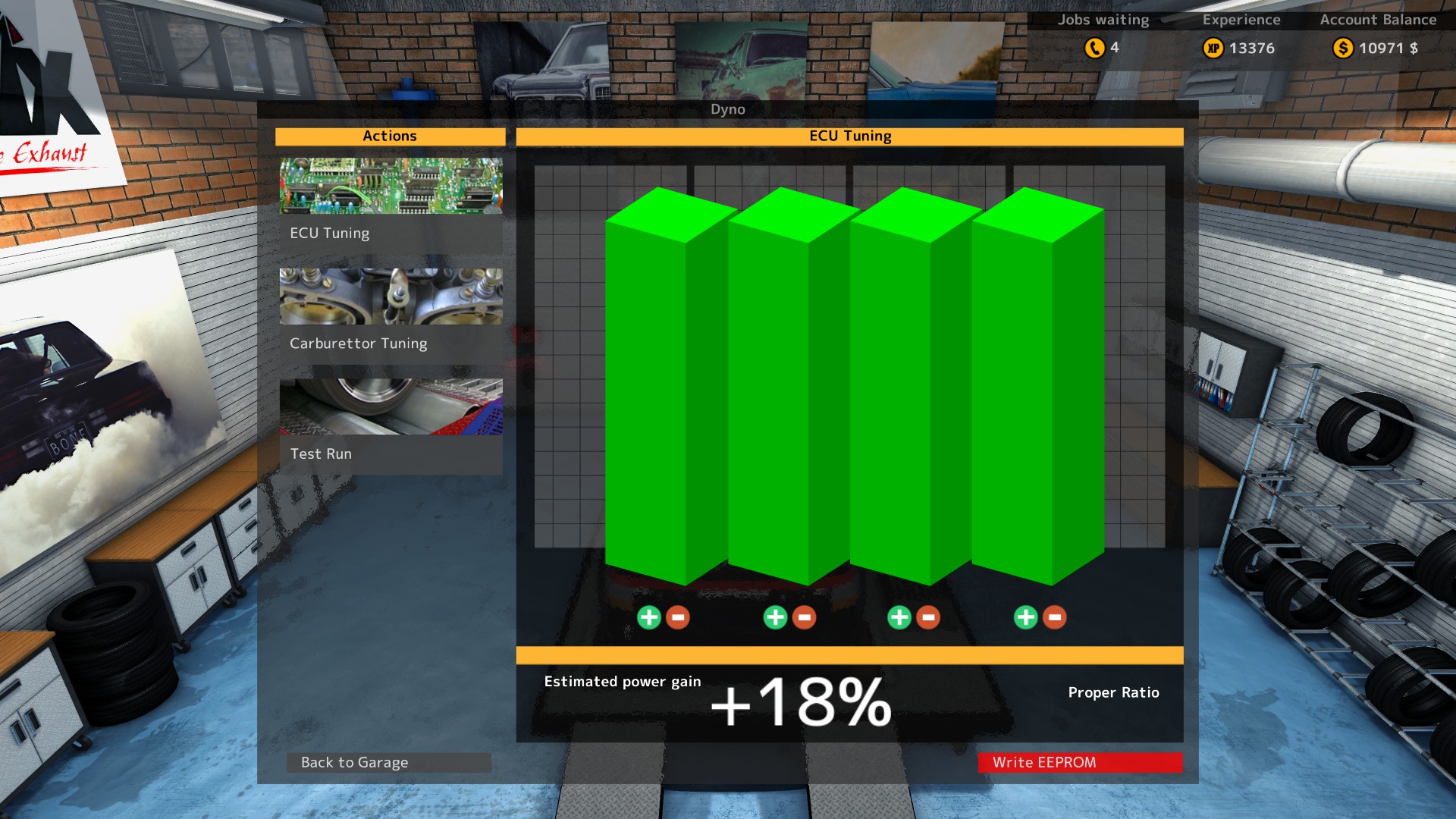Overview
This guide uses simple, step-by-step instructions that are guaranteed to work regardless of starting configuration. I came up with this solution after an hour or so of linear algebra and python simulations; but I’ll spare you the details.
Explanation of Game Mechanics
As you can see from the screenshot, the tuning interface consists of 4 bars, each with their own add/subtract buttons. Each bar has a total of 9 possible levels, and the bars will “loop around” when added over their max, or subtracted below their min. Whenever you add to one bar, it will subtract from all other bars, and vice-versa for subtraction.
Background (Read this before continuing)
This guide is written for ECUs, but the exact same method works for carburrettors, you just have one less bar.
I’ll refer to each bar in the tuning interface by letter; A, B, C and D.
Moves will be written in the following format:
A+1====================This means to click the “+” sign on the leftmost bar once.
B+2, C-2================This means to click the “+” sign on the second bar once. and the “-” sign on the third bar twice
If you’re thrown off by symbols, the screenshots should be enough to get you through.
Step 1: Max out the “A” bar
Just do the following move:
“A+1”
until you turn this:

The other 3 bars don’t matter at this point
Step 2: Max out the “B” and “C” bars without changing the “A” bar
Starting from where we left off last:

Of course, you can speed this up; B+2, C-2; I’m assuming you’ll come up with your own shortcuts as you discover the method.
Your first 2 bars should look like this (ignore the other 2):
Again, we’re completely ignoring the other bars at this point.
Now, it’s time to do the same thing for the “C” bar. Simply perform “C+1, D-1” until the “A”, “B”, and “C” bars are completely maxed out. Once you get the hang of this, you’ll be able to complete these first 2 steps in less than 30 seconds.
When your first 3 bars look like this, you’re ready to move onto step 3
Step 3: Max out the final bar
This step is going to seem the weirdest, but I promise it will work, though it may take several iterations.
Start by performing the following move:
“A-1, B-1, C-1”: Your first 3 bars should now look like this

You might have something like this now (Note, the first 3 bars are maxed):
If your “D” bar isn’t maxed, start step 3 from the beginning until it is; “A-1, B-1, C-1” and then “D-1” until the “A”, “B”, and “C” bars are maxed. It may look like your bars are being scrambled, but if you do it properly, you’ll get this, every time (it could take as many as 10 iterations, probably an average of around 5).





